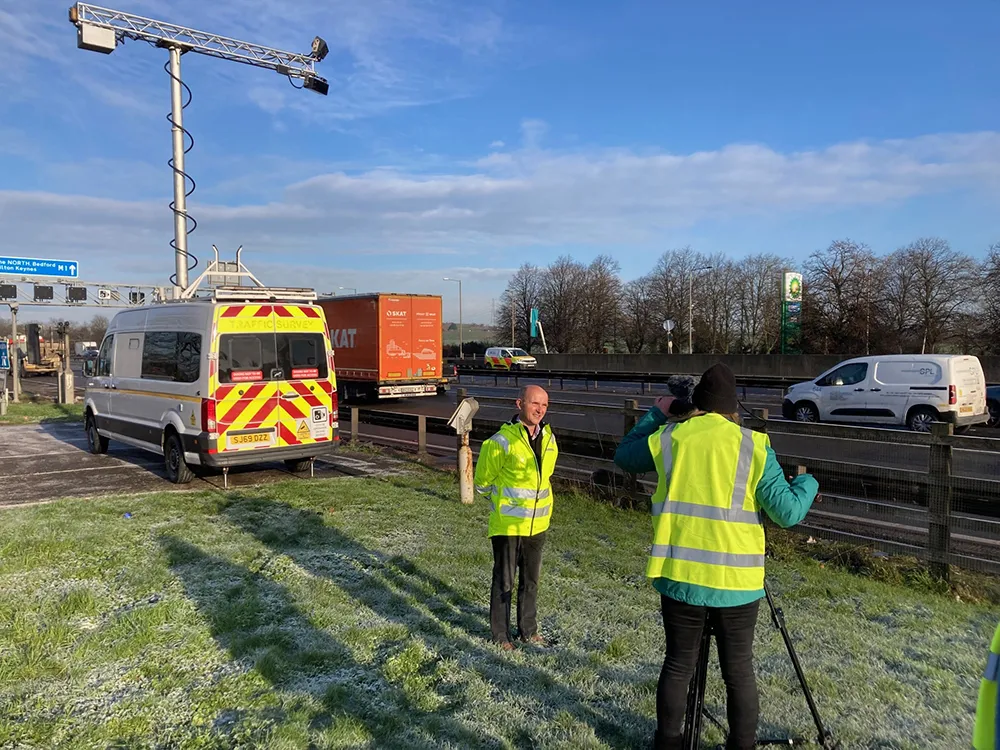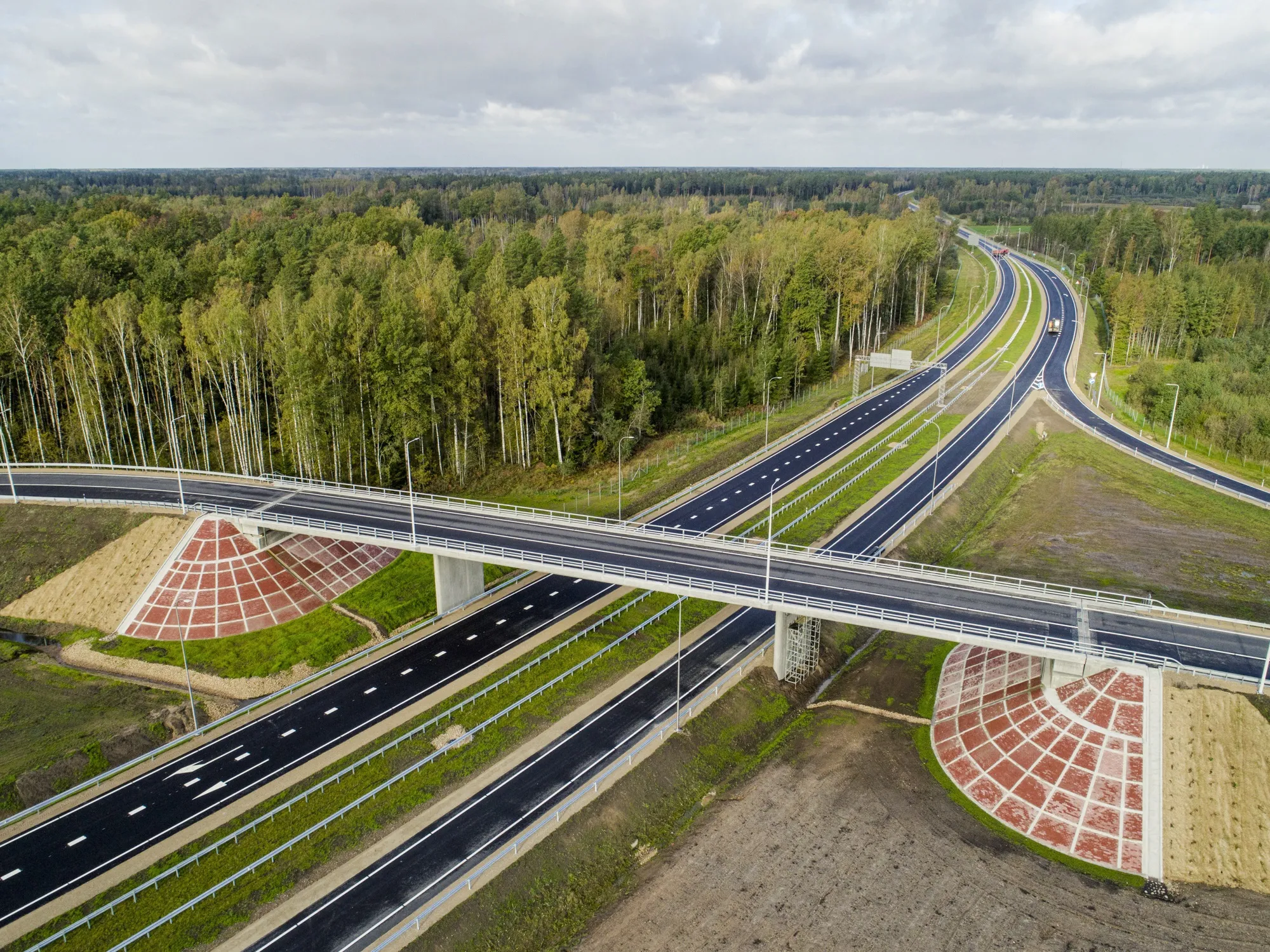Like many others, the authorities in Argentina implemented ITS to improve road safety – but this case was a little different to most as Mauro Nogarin explains.
The 70km of highway that separate Argentina’s capital Buenos Aires from the city of La Plata had long been considered too dangerous for anyone to make the trip with a private car. Figures on criminal attacks and vandalism with stones, nails, logs, spark plugs or any other element that can damage a car’s tyres and cause them to stop in order rob th
June 21, 2016
Read time: 4 mins

Like many others, the authorities in Argentina implemented ITS to improve road safety – but this case was a little different to most as Mauro Nogarin explains.
The 70km of highway that separate Argentina’s capital Buenos Aires from the city of La Plata had long been considered too dangerous for anyone to make the trip with a private car.
Figures on criminal attacks and vandalism with stones, nails, logs, spark plugs or any other element that can damage a car’s tyres and cause them to stop in order rob the occupants, were striking. A study by the National Commission for Victims of Public Transport during the last three years reveals that 234,300 attacks were perpetrated, with an average of more than 200 violent episodes per day.
Following this alarming situation Autopistas de Buenos Aires SA (AUBASA), the company that manages this motorway, installed one of the country’s most modern intelligent transport systems including 180 cameras to cover the 70km route and the toll plazas. Just over 50km of the road is tolled, starting 3.5km into the route with tolling points at South Dock at 7km, Bernal (17km), Quilmes (21km), Berazategui (26km), Hudson (30km) and ending at LaPlata (54km).
South Dock and Hudson are each equipped with four fixed and four dome cameras while the other tolling plazas are fitted with four dome cameras. In addition, each toll station can be control remotely.
Video images from the cameras are routed to the new purpose-built 24/7 monitoring centre located at the 30km point - Hudson Toll. Inside the centre are six monitoring positions and the largest video wall comprises twenty 50" LED TV monitors which can be configured to display an unlimited number of video channels from different locations.
Not only does the centre monitor the road for traffic management purposes but it also houses a Gendarmerie and a Police station to enable the rapid deployment of emergency equipment on the highway, police, fire, ambulance and civil defence.
All the management and organisation of the displays is centralised and can select between programs from multiple independent systems. The data management software for monitoring UltraIP VMS video provides integration and management of video security systems, allowing the simultaneous monitoring of any number of points along the highway.
These video walls can be configured in a scalable manner using any HD monitor; and multiple video walls can be connected to VMS UltraIP. The monitors display various types of information: live video, recorded video, text, maps and plans, alarm status, control status, routing channels or predefined provisions for custom cameras, ANPR or other third-party information such as or facial recognition. Software management and license plate recognition ANPR UltraISO uses video from any camera while the data management software for monitoring UltraIP VMS video allows the integration of video security systems.
Other features include setting choices of bandwidth per user per remote site; remote access to all modules connected to the system; complete video management allowing the technician in charge to execute a variety of configurations.
Beyond real-time management the system has the ability to record multiple sites and search by time and date, as well as alarm triggered by events.
The installation of the cameras and 24/7 monitoring has led to an 80% reduction in the acts of violence being committed along the highway. Last September the technology on the Buenos Aires-La Plata Freeway was awarded the Latin American Security Association’s best security project for Latin America and the Caribbean in 2015.
Beyond the security aspect, all 180 cameras along the length of the freeway are linked to the database of ARBA (the tax collection agency of the Province of Buenos). By using the ANPR system in VMS, it allows any camera in UltraIP VMS to detect the license plate of vehicles where the toll tag has gone beyond its renewal date. ARBA is utilising the license plate recognition to improve auditing.
Six speed sensors are strategically placed (at 7km and 11km ascending and descending directions plus at the 31km and 33km ascending branch at Gutierrez) to determine travel times and this information is displayed on nine variable message signs. The signs are also used to display precaution and prevention messages generated by the traffic monitoring and control centre.
In the process of modernising the freeway, some 5,000 street lights were replaced by the latest generation of LED lights.
Allowing a saving of 60% of its electricity consumption, which benefits the environment while reducing energy consumption.
The impact on the overall security of the camera system which runs the entirety of the Buenos Aires-La Plata Freeway has been to strengthen the constant monitoring of vehicular traffic which was the main element that won this award.
The 70km of highway that separate Argentina’s capital Buenos Aires from the city of La Plata had long been considered too dangerous for anyone to make the trip with a private car.
Figures on criminal attacks and vandalism with stones, nails, logs, spark plugs or any other element that can damage a car’s tyres and cause them to stop in order rob the occupants, were striking. A study by the National Commission for Victims of Public Transport during the last three years reveals that 234,300 attacks were perpetrated, with an average of more than 200 violent episodes per day.
Following this alarming situation Autopistas de Buenos Aires SA (AUBASA), the company that manages this motorway, installed one of the country’s most modern intelligent transport systems including 180 cameras to cover the 70km route and the toll plazas. Just over 50km of the road is tolled, starting 3.5km into the route with tolling points at South Dock at 7km, Bernal (17km), Quilmes (21km), Berazategui (26km), Hudson (30km) and ending at LaPlata (54km).
South Dock and Hudson are each equipped with four fixed and four dome cameras while the other tolling plazas are fitted with four dome cameras. In addition, each toll station can be control remotely.
Video images from the cameras are routed to the new purpose-built 24/7 monitoring centre located at the 30km point - Hudson Toll. Inside the centre are six monitoring positions and the largest video wall comprises twenty 50" LED TV monitors which can be configured to display an unlimited number of video channels from different locations.
Not only does the centre monitor the road for traffic management purposes but it also houses a Gendarmerie and a Police station to enable the rapid deployment of emergency equipment on the highway, police, fire, ambulance and civil defence.
All the management and organisation of the displays is centralised and can select between programs from multiple independent systems. The data management software for monitoring UltraIP VMS video provides integration and management of video security systems, allowing the simultaneous monitoring of any number of points along the highway.
These video walls can be configured in a scalable manner using any HD monitor; and multiple video walls can be connected to VMS UltraIP. The monitors display various types of information: live video, recorded video, text, maps and plans, alarm status, control status, routing channels or predefined provisions for custom cameras, ANPR or other third-party information such as or facial recognition. Software management and license plate recognition ANPR UltraISO uses video from any camera while the data management software for monitoring UltraIP VMS video allows the integration of video security systems.
Other features include setting choices of bandwidth per user per remote site; remote access to all modules connected to the system; complete video management allowing the technician in charge to execute a variety of configurations.
Beyond real-time management the system has the ability to record multiple sites and search by time and date, as well as alarm triggered by events.
The installation of the cameras and 24/7 monitoring has led to an 80% reduction in the acts of violence being committed along the highway. Last September the technology on the Buenos Aires-La Plata Freeway was awarded the Latin American Security Association’s best security project for Latin America and the Caribbean in 2015.
Beyond the security aspect, all 180 cameras along the length of the freeway are linked to the database of ARBA (the tax collection agency of the Province of Buenos). By using the ANPR system in VMS, it allows any camera in UltraIP VMS to detect the license plate of vehicles where the toll tag has gone beyond its renewal date. ARBA is utilising the license plate recognition to improve auditing.
Six speed sensors are strategically placed (at 7km and 11km ascending and descending directions plus at the 31km and 33km ascending branch at Gutierrez) to determine travel times and this information is displayed on nine variable message signs. The signs are also used to display precaution and prevention messages generated by the traffic monitoring and control centre.
In the process of modernising the freeway, some 5,000 street lights were replaced by the latest generation of LED lights.
Allowing a saving of 60% of its electricity consumption, which benefits the environment while reducing energy consumption.
The impact on the overall security of the camera system which runs the entirety of the Buenos Aires-La Plata Freeway has been to strengthen the constant monitoring of vehicular traffic which was the main element that won this award.









